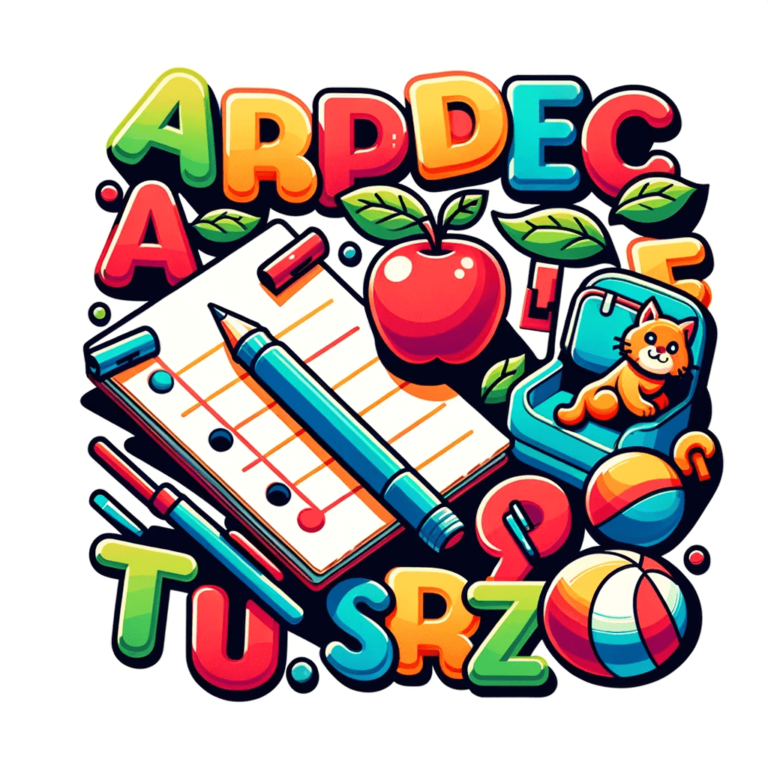What Is An Acrostic Poem? Definition, Examples & Writing Tips
Have you ever seen a word that’s more than just a word? Imagine looking at a single word and discovering a secret message or a hidden story. That’s the magic of an acrostic poem. It’s a playful and creative way to give words a deeper meaning.
In this article, we’re going to explore the charming world of acrostic poems. We’ll learn what they are, how to write them, and even look at some examples.
Whether you’re a teacher looking for a fun classroom activity, a student trying to understand poetry or just someone who loves playing with words, this journey into acrostic poems is for you.
Get ready to give letters a whole new life!
Table of Contents
What is An Acrostic Poem?
An acrostic poem is a special kind of writing where the first letter of each line spells out a word or message. It’s like a puzzle hidden in plain sight.
The beauty of acrostic poems is how they turn simple words into something enchanting.
Each line of an acrostic poem starts with a letter from a word you’ve chosen. That word becomes the spine of your poem.
The lines can connect to the meaning of that word or be completely independent.
The real thrill is in how these poems invite readers to look beyond the surface, discovering meaning not just in what is said, but also in how it’s structured.
The Formal Definition of an Acrostic Poem
An acrostic poem is a poem where certain letters in each line—typically the first letter—create a word or message when read in sequence. It’s a creative form that gives structure and a hidden layer of meaning to a poem.
While acrostic poems often use the first letter of each line to spell out words, some stretch these boundaries. They might use the last letter or a letter from the middle of each line.
The key is consistency—whatever pattern the poet starts with should continue throughout the poem.
This form challenges poets to be creative within constraints. It’s like a game, where finding the right words is part of the fun. The result is a poem that is as much a brain teaser as it is an art form.
Do Acrostic Poems Have to Rhyme?
The short answer is no. Acrostic poems do not need to rhyme. The choice to rhyme is up to the writer. Some people love the extra challenge of making the poem rhyme. Others prefer to focus on the message spelled out by the first letters.
Examples of Rhyming vs. Non-Rhyming Acrostic Poems
Let’s look at two examples:
In the rhyming example, the end of each line has a word that sounds similar to the end of another line, creating a musical effect. In the non-rhyming example, the focus is more on the meaning rather than the sound.
Both styles have their charm, and the choice depends on what the poet wants to achieve with their work.
Acrostic Poem Examples
Acrostic poems come in many shapes and sizes, reflecting the diversity of the people who write them. They can be about anything—nature, feelings, people, or even places.
Here are different types of acrostic poems to show how flexible this form can be:
In the simple acrostic, the word ‘MOON’ is spelled out by the first letters and the lines describe the moon’s role in the night sky.
The complex acrostic goes beyond just using the first letters to spell ‘BRAVE’ but also tells a story of what bravery entails.
Each acrostic poem carries its rhythm and message, from the simplest to the most complex. It’s the poet’s personal touch that makes each one unique.
Variations of Acrostic Poems
Acrostic poems can vary a lot. Some are straightforward with the first letter of each line spelling out the word. But there are more styles to try:
- Double Acrostics: These have letters at the beginning and end of each line spelling out words.
- Telestich: This is where the last letter of each line spells out a word.
- Mesostich: In this variation, the middle letter of each line spells out the word.
Double Acrostics and Other Complex Forms
Double acrostics are like a conversation between two words or phrases, one at the start of the lines and one at the end. They require a bit more planning, but the result is often very striking. Here’s an example:
The first letters read ‘SUNS’ and the last letters read ‘ADIS’, creating a hidden message within the poem.
These variations encourage poets to get creative and think outside the box. They can add layers of meaning and make the poem more intriguing.
How to Write an Acrostic Poem
The first step in writing an acrostic poem is to pick your foundation word or phrase—this will be the backbone of your poem. Choose a word that sparks your interest or has a special meaning. It could be a name, a feeling, or anything else you like.
Step-by-Step Guide to Writing Your First Acrostic Poem
- Write down your chosen word vertically: Each letter will be the first letter of each line in your poem.
- Think about your theme: What do you want to say with your poem? How does each letter relate to your theme?
- Brainstorm words or phrases for each letter: These will start each line of your poem and should connect to your theme.
- Expand your lines: Now, build on the words or phrases you’ve chosen. Create a line for each that expresses your theme or tells part of your story.
- Refine your poem: Go through your poem and adjust words to improve the flow and meaning. Remember, it doesn’t have to rhyme unless you want it to.
- Read it out loud: This helps you hear the rhythm and catch any lines that might need tweaking.
Tips for Crafting Poems That Are Both Aesthetic and Meaningful
- Be Flexible: If a line doesn’t fit well, try to think of another word or idea that still connects to your theme.
- Use Imagery: Vivid images can help make your poem more engaging and memorable.
- Keep it Simple: Especially if you’re writing in a language that’s not your first, it’s okay to keep your lines straightforward.
- Have Fun: Enjoy the process of creation. If you’re having fun, it’s more likely that your readers will too.
Challenges and Common Mistakes
Even though acrostic poems seem straightforward, there are common challenges that writers might face:
- Forcing Words: Sometimes a word doesn’t fit the theme or the rest of the poem but is used because it starts with the right letter.
- Overlooking the Big Picture: Writers may focus too much on the vertical word and forget to ensure the poem works as a whole.
- Neglecting the Flow: It’s easy to get caught up in the structure and end up with a poem that’s choppy or awkward to read.
Solutions and Advice
To avoid these pitfalls:
- Brainstorm Multiple Words: If you’re stuck on a letter, brainstorm as many words as you can think of before deciding.
- Read Your Poem Without the Acrostic: This helps ensure the poem still flows and makes sense independently of the acrostic.
- Smooth Transitions: Try to make each line transition smoothly into the next, maintaining a natural rhythm.
Finally, don’t hesitate to revise. Sometimes the best way to improve a poem is to rewrite parts of it until every word feels right. Remember, writing is a process, and it’s okay to take your time to get it just right.
Closing Thoughts
Acrostic poems are great for everyone. They are not too hard and can be fun. You can write about anything you like!
All you need to do is pick a word and start each line with one of the letters from that word.
Writing acrostic poems is like playing a word game. It’s all about finding the right words that fit and feel good.
So why not give it a try? You might make something you’re proud of, or just have a good time.
That’s the beauty of acrostic poems – they are what you make them, and the most important thing is to enjoy the process.







